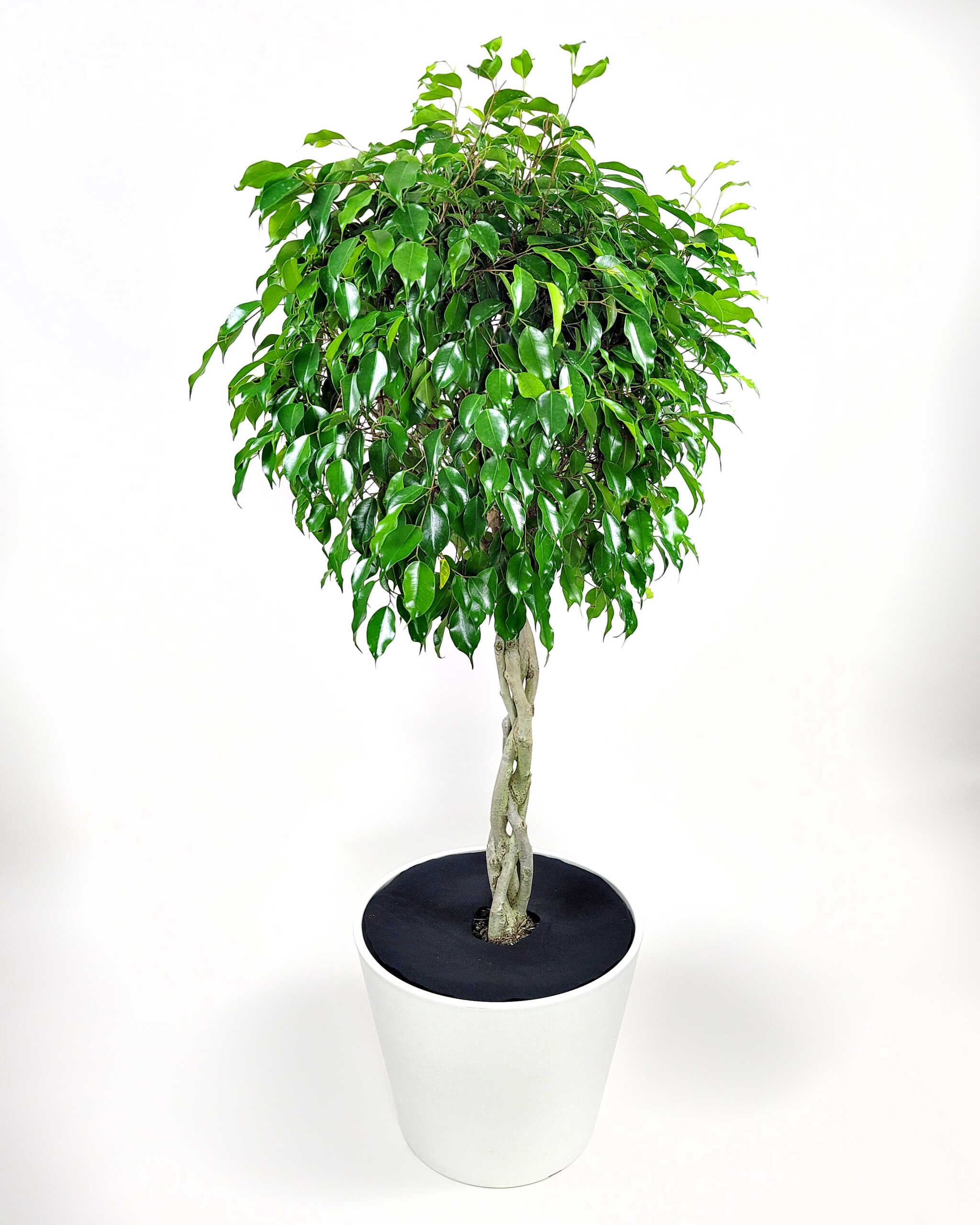Description
This Tropical Rainforest Tree Is a Lush Addition to InteriorsBelonging to the Fig Genus, the Ficus Tree is a very popular and appealing plant. With hundreds of species, the plant catches the attention of many. Nonetheless, very few can be found in cultivation. They are native to many regions of the tropics, mostly including America, Asia, and Africa.Known by many names, some Ficus Trees are also referred to as fig trees, producing a well-known and enjoyable fruit.Other common names are Ficus Benjamina (a variety of the plant) and weeping fig. Inside your home, the ficus can be a marvelous specimen plant that is abundant with lush foliage. However, to ensure that the plant thrives throughout the year, you must adhere to some specific care routines.Caring for your Ficus BenjaminaPeople will often struggle when it comes to caring for the Weeping Ficus plant. These plants are not very resilient to cold conditions and respond to drafty conditions by shedding their leaves.Not to mention, they do not fare well if you move them too much. Not only are they vulnerable to pests and infestation, but their tropical habitat means that you have to provide them with a particular environment if you wish to grow them indoors.LightThe plant, in general, requires bright light; however, this does not mean that they will benefit if you place them under direct sunlight. The only plants that can withstand direct sunlight are the acclimated ones. You have to, therefore, make sure that they get high-intensity light, but not to the level of direct sunlight. Light is extra important for this plant to reduce leaf loss in its new home. If you don’t have a bright enough location, try the Ficus benjamina ‘Danielle’ instead which can tolerate lower light conditions.WaterThe watering requirement to keep the ficus tree indoors changes according to the seasons. For instance, in the winters, it requires less watering compared to the summers. Moreover, since the plant is from a tropical habitat, it requires plenty of moisture to thrive.Therefore, if your indoor atmosphere is very dry, your plant may suffer. To keep the moisture levels high, you will have to resort to misting and watering to keep the plant healthy. Also, make sure to check the soil after you water the plant and make sure that the roots do not dry.Soil and FertilizerA ficus needs very fertile and nutrient-rich soil. Along with that, it also requires good pot drainage. Make sure that you do not use potting soils that are too acidic, and use soil-based potting mixes.When feeding your ficus, slow-release pellets can work well at the beginning of the growing season. They have a rapid growth rate, and this means that you can benefit from feeding them in spring and summer. This also implies that you can slow down the fertilization in the colder seasons.Common Issues (Pests and Disease)Apart from being vulnerable to mites, whiteflies, and other insects, they also respond poorly to even the slightest changes in the conditions. Any stress will result in the loss of leaves, which is why you have to be thorough and precise when caring for this plant.PruningPruning the ficus tree is important. It keeps the plant in shape and, in some cases, prevents it from outgrowing the indoor space.It is best to prune this plant during the winter season. This is the time in which the plant is not actively growing. When pruning, cut a few inches from a node to maximize sprouting success.PropagationAir layering is the preferred propagation method for the ficus. In this method, you have to wrap the stem with damp moss to encourage root growth.Potting / RepottingWhen you provide a ficus plant with adequate conditions and a healthy environment, it will easily outgrow your house, let alone the pot.Keep in mind that this plant, in its natural habitat, is a surface tree. Repotting every other year can help slow the plant’s growth and keep it at a size that you can manage.





